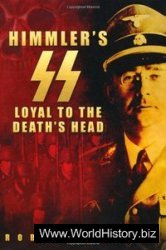The Church of Jesus Christ of Latter-day Saints (more commonly known as the Mormon Church) was organized by Joseph Smith, Jr., in 1830 in Fayette, New York. In 1820, according to his own account, Smith received a direct revelation in the form of God the Father and his son, Jesus Christ, who anointed Smith a prophet, through whom the new church of Christ would be restored on earth. In later revelations, an angel named Moroni gave Smith the location of Golden Plates and the means to translate them. Smith completed the translation of the Book of Mormon from the plates in 1829. With its publication in 1830, Smith incorporated his church under New York law and began to preach his gospel to all who would listen to him.
The history of the church under its founder and first prophet, Joseph Smith, falls into three divisions. In the first, the church was located in Kirtland, Ohio, south and east of Cleveland, where Smith moved his headquarters after one of his disciples converted a congregation there. The Kirtland community of Saints grew rapidly, and Smith laid plans to erect the first church temple. Completed in 1836, the temple became the center of new religious ceremonies received by Smith in divine revelations. The church and its leaders were part of the prosperity associated with the time and place, and to take further advantage, Smith sought to establish a bank. His application denied, the bank went into operation anyway. When the PANIC OF 1837 brought chaos to the state banking system, the Kirtland Anti-Banking Society Bank collapsed, along with most of the other local banks. This failure intensified divisions within the church, based in part on the rumors that Smith had sanctioned POLYGAMY (plural wives) as a part of church doctrine. Some members of the church left, and Smith and his loyal followers left Kirtland and moved to Mormon settlements in Missouri.
The Mormon community in Missouri dated from a missionary enterprise of the early 1830s, which had gone west to convert Indians. The centers of Mormon settlements were originally in Jackson County, north of Kansas City, and later farther north in Ray County. The sudden growth of the Mormon community by the influx from Kirtland began a period of expansion. Tensions with the surrounding population eventually developed, centering around the Mormons’ growth and prosperity, their strong sense of group loyalty, their sympathy toward slaves, and their belligerence in defending what they thought of as their rights. As their neighbors began armed raids against outlying Mormon settlements, church leaders responded by organizing a paramilitary group known as the Sons of Dan, or the Danites. The attacks on the Mormons grew to include armed raids, arson, and murder. The Mormons responded in kind to what they saw as unprovoked aggression and the failure of the civil legal system to protect them.
The governor of Missouri, Lillburn W. Boggs, called out the militia. Believing that the Mormons were an undisciplined mob of religious fanatics, Boggs ordered them to leave Missouri or face extermination. Smith realized that his followers, however loyal and disciplined, stood no chance in conflict with a militia that had unlimited numbers and artillery, and he ordered the surrender of the church. He and other church leaders were imprisoned for several months without formal charges, while the members of the church were driven from the state. After six months in prison, Smith and the church leaders were permitted to leave the state of Missouri.
The third site of the Mormon community was a town on the Mississippi River north of Quincy, Illinois. Church leaders purchased the site in 1839, and Smith changed the name of the town from Commerce to Nauvoo, which he said derived from the Hebrew word for “beautiful.” The new Mormon settlements came to embody the church’s continuing growth and Smith’s search for security in what seemed a perpetually hostile world.
As the Mormon settlements grew, enlarged by natural increase and the arrival of Mormon converts from England, the population swelled from 1,000 in 1839 to more than 10,000 in 1844. By 1845, Nauvoo was one of the largest cities in Illinois. In addition to economic prosperity, these numbers gave Smith a degree of political power. With the Whigs and Democrats evenly balanced within the state, he used the voting bloc of the Mormons to bargain for the security of the church community. The state legislature voted the Mormon community a special charter, the so-called Nauvoo Charter, which seemed to give the community, its city, and its leaders special privileges and rights. These rights included a university, founded in 1844 although never actually organized. Smith was elected mayor of Nauvoo in 1842, and the governor of Illinois appointed him a lieutenant general in the state militia. With state arms, Smith enrolled and trained the Nauvoo Legion, a carefully selected body of men whose training, discipline, and zeal was reassuring to members of the church community and threatening to outsiders. This series of events culminated in spring 1844, when Smith announced himself a candidate for president of the United States.
As the community grew in numbers and political and military power, Smith’s revelations brought new theological directions for the church. Among these were the baptism of the dead, so that all might have the benefit of a church baptism. In conjunction with these revelations, Smith ordered the construction of a temple. Amidst distinctive religious rituals that became part of the church doctrine, rumors again circulated that church leaders sanctioned and, indeed, practiced polygamy. These rumors generated a strong degree of dissent within the church itself.
In spring 1844, a group of estranged members of the church published a single issue of a newspaper that exposed polygamy and other practices by church leaders. Smith called a special meeting of the town council, declared the newspaper and its press a public nuisance, and ordered the press destroyed. The dissident leaders sought refuge outside the Mormon settlements and charged Smith with arson. After his safety was guaranteed by the governor, Smith surrendered and was imprisoned with other church leaders at Carthage, where he was to stand trial. On June 27, 1844, a mob broke into the jail and shot Smith and his brother Hyrum. The death of the church’s founder and prophet closed the first crucial period in the church’s history.
Among the leaders who sought to follow Joseph Smith as the church’s leader, Brigham Young was the logical choice. He took charge of a community in mourning over the death of their founder and prophet, divided internally over the issue of polygamy, and under physical assault from the outside. As soon as he received the sanction of the Quorum of the Twelve Apostles (a committee of senior Mormon leaders), Young displayed the remarkable qualities of leadership that he would bring to the church over the next 30 years. He first sought a truce to stave off further mob violence and attempted to negotiate an orderly departure of the church from Nauvoo, but he was only partially successful. Even as he and other church leaders prepared for an emigration to the West, the Mormon settlements in Nauvoo were under attack from the surrounding countryside. Invading mobs burned homes and pillaged what they did not burn. In winter 1846, the Mormons fled across the river and headed west to a new and as yet undisclosed location.
After crossing the state of Iowa, the Mormon migration paused for a year in Winter Quarters (near Omaha, Nebraska). Here, Young and other leaders prepared the organization of a large encampment of church members near Omaha and began to lay plans for an emigration of the church into the distant Inter-Mountain West.
The first wagon company, led by Young himself, departed Winter Quarters in the spring of 1847 and reached the Valley of the Great Salt Lake in July 1847. Here, Young declared that the valley was to become the site of the future City of Zion. What followed was the systematic immigration of the church from Winter Quarters to the Valley of the Great Salt Lake, a process that lasted two years. Even then, later emigrations across the plains (some in the form of “hand cart brigades”) took place for another decade.
Within what was to become the state of Utah (although Young initially called it the State of Deseret), Young systematically organized the Saints into a theocracy that controlled land, water, and other natural resources. When the federal government organized Utah Territory in 1850, Young was appointed governor. However, the federal judges appointed to the territorial court were non-Mormons, and they feared the theocracy that surrounded them. The hostility against the Mormons received fresh impetus in 1852 with the announcement that polygamy, practiced in secret by certain church leaders, was indeed a fundamental belief and practice within the church.
The open avowal of polygamy began a half-century of conflict and hostility between the church and the rest of the nation. Mormons saw the practice as a normal custom and their right as a chosen people headed by a farsighted prophet, seer, and revelator. To non-Mormons, the practice of plural wives was a violation of every tenet held by 19th-century America.
The sense of the Mormons as living in violation of the laws of the nation reached its climax in 1857, when President James Buchanan dispatched units of the U. S. Army to Utah to suppress what he regarded as a rebellion. At the same time, he removed Young as governor of the territory. Aware of the impending arrival of federal troops, the Mormon community began defensive preparations for an armed conflict. In this tense climate, Mormons and Indians attacked a wagon train at Mountain Meadows in southwest Utah. Some 120 men, women, and children died in what came to be called “The Mountain Meadows Massacre.” Young, who had originally ordered the wagon trains to pass in safety, did little to bring the perpetrators to justice, preferring loyalty to the church to a public exposure of the church members involved in the attack. Twenty years later, the federal government tried and executed John D. Lee, a Mormon leader and Indian agent, for the crime.
The federal army occupied parts of Utah, in what historians call the Utah War. Young decided not to oppose the invading expedition by force. Instead, he burned forts and towns and destroyed crops in hopes of delaying the army’s advance. Eventually, the two sides reached a degree of mutual accommodation. In 1858, the federal government pardoned Young for offenses, and the army gradually retired, with the last of the forces leaving Utah on the outbreak of the Civil War.
The rest of the nation now turned its attention to the great war that divided it, and Young and the Mormon community turned their attention to growth and consolidation. Missionary efforts, an integral part of the church since its founding, revived and expanded. Converts from the East and from Europe (especially Great Britain) poured into Utah, whose church settlement had expanded across hundreds of miles, as far distant as Arizona and Nevada. When Brigham Young died in 1877, Utah’s population was 145,000, almost all members of the church community. In this prolonged period of independence, the institution of polygamy developed without internal or external opposition to become an accepted part of the church.
Mormon economic affairs also prospered. The agricultural enterprises associated with arable land irrigation grew and expanded, viewed throughout as arms of the church. Economic activity at all levels revolved around the church and church leaders. The joining of the Union Pacific and Central Pacific Railroads at Promontory Point, Utah, in 1869, ended Utah’s isolation from the rest of the nation. Thereafter, groups in Congress and the federal government were to launch a growing campaign of restrictive legislation against the church. These acts and court decisions against polygamy and the Mormon economic domination of the territory led to a series of compromises and Utah’s eventual admission to the Union in 1896.
Further reading: Leonard J. Arrington, Great Basin Kingdom: An Economic History of the Latter-Day Saints, 18301900 (Cambridge, Mass.: Harvard University Press, 1958); Jan L. Shipps, Mormonism: The Story of a New Religious Tradition (Urbana: University of Illinois Press, 1985).




 World History
World History









